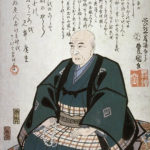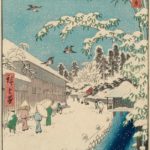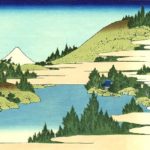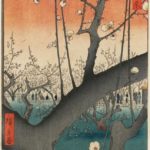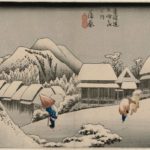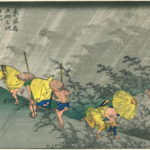“Hakone, the view of Ashinoko Lake” from Fifty-Three Stages on the Tokaido
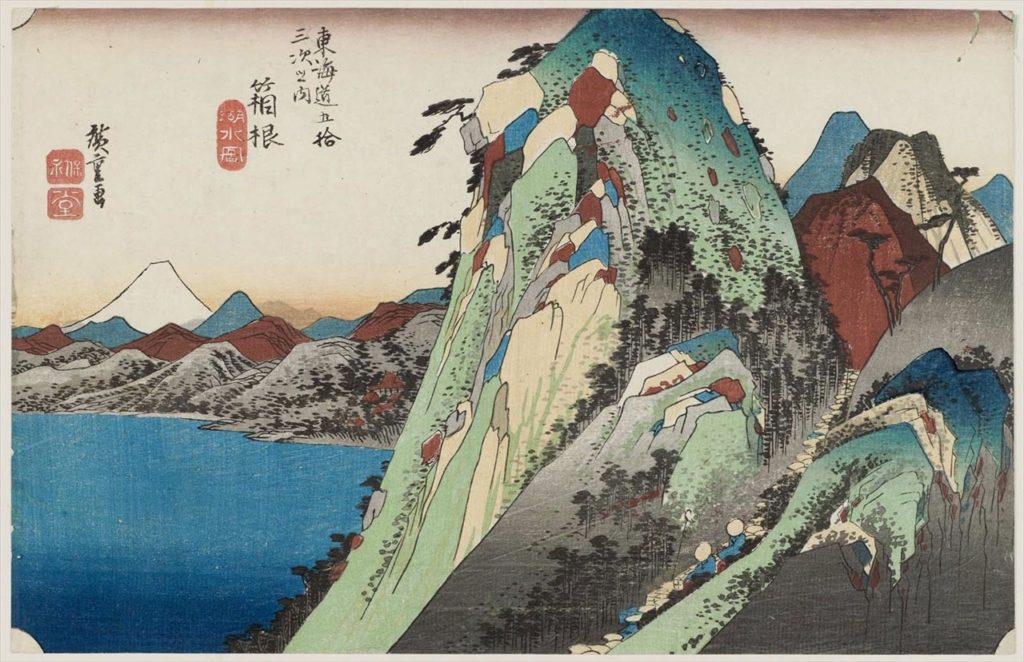
It is a masterpiece Utagawa Hiroshige (1797-1858)‘s artworks painted by a combination of various colors and unusual shapes of Mt Hakone. The ancient Japanese people called Hakone Pass as “The most precipitous in the country, the abyssal ravine”.
Hiroshige drew the overflowing mountain with the overwhelming sense of volume, which express the difficulty to cross the pass.
On the lower right, the Daimyo’s procession goes down the narrow and steep slope in a row. With colors like a mosaic, the extremely deformed Mt. Hakone sticks out to Lake Ashinoko with a steep gradient.
We can see beautiful white Mt. Fuji lightly powdered with snow in the distant landscape. The depiction must have got accepted with surprise by the common people of Edo and became popular.
Though the artworks of “Shono, the evening squall” and “Kambara, the snow in the night“, Fifty-Three Stages on the Tokaido get the high reputation, Mt. Hakone and Ashinoko Lake were more familiar for the people of Edo. After the publication of “Tokaidochu Hizakurige” by Zippensha Ikku (1765-1831), a travel on Tokaido was prevalent. The Hakone Pass, which travelers could not avoid, was a sightseeing and dangerous spot. Even in the whole 500 km from Nihonbashi (Edo) to Kyoto, crossing the pass was the toughest.

